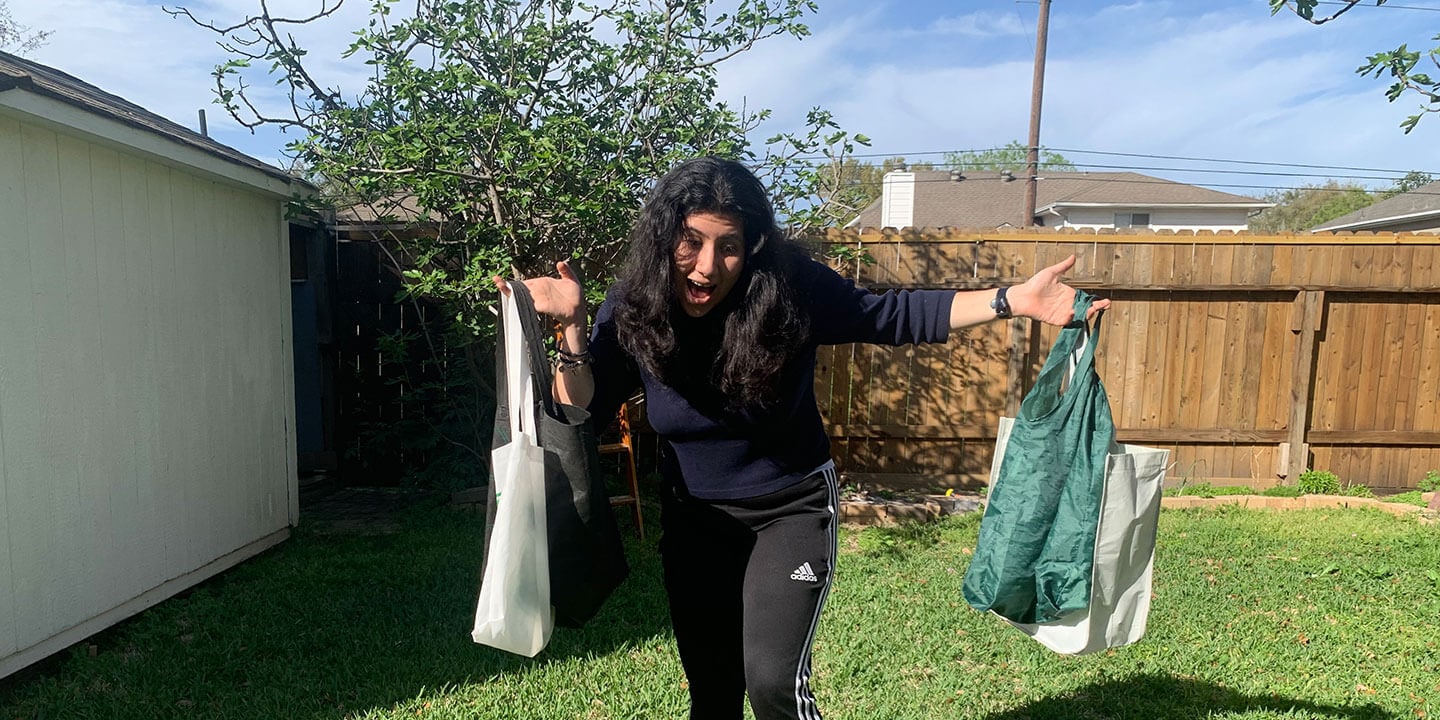
Easy Ways College Students Can Live More Sustainably

As an Environmental Science student who cares about our planet, I believe small actions can make for big change. For many students, adopting a more sustainable lifestyle through the hustle and bustle of college can seem like a daunting task, but it doesn't have to be. Living a more sustainable lifestyle can be easy and benefits not only the planet but also your wallet! Saving the planet is a collective endeavor; all I can do is share my tips and wisdom on the matter. Just remember, it's not about perfection; it's about effort and mindset.
Tip #1: Unplug Electronics When Not in Use
A majority of things that have to be plugged in continue to use energy even when they are turned off or not in use. Things like phone chargers, computer cords, coffee makers, lamps, irons, and so many more drain your energy like a vampire. According to Duke Energy, vampire energy from these items can account for almost 20% of your monthly electricity bill. Taking just 5 minutes to unplug can save on energy, reduce your carbon footprint, and save money.
Tip #2: Buy Less
Everything you buy has a carbon footprint, from the resources it took to grow or mine, to the energy and greenhouse gasses associated with its production, and to its life after you have finished using it. Our society has, unfortunately, normalized overconsumption. One thing that has helped me with impulse purchases is asking myself a series of questions:
- “Do I really need this item?
- “Will I use this thing more than once?”
- “If I wait 30 days, will I still want to buy this thing”
- “When I am done with this, will I be able to repurpose it or dispose of it responsibly?”
Use up what you have before you purchase more. Will saying no to buying another perfume for your 20+ collection really make or break you? This does not mean you cannot buy things for yourself, but make sure that when you do, you do it like an intelligent consumer to help out the planet.
Tip #3: Buy Second Hand and Re-Wear Your Clothes
Grab a friend and hit up a thrift store for most of your clothing needs. A good 3/4ths of my wardrobe are things I got at thrift stores, garage sales, or hand-me-downs. It’s significantly cheaper than retail and forces you to be more creative with what you wear. Make sure you buy clothes you will wear more than once and can see yourself styling in different ways. Famous fashion designer Patrick Grant has said that we have enough clothing on the planet right now to clothe the next 6 generations of the human race. Stop feeding the dumpster fire that is the Fast Fashion industry. Be kinder to the planet and give an existing garment a new life.
Tip #4: (For Anyone Who Menstruates) Invest in Period Underwear and Menstrual Cups
Regular pads and tampons create a lot of waste, are wrapped in single-use plastics, and are often uncomfortable. I used to spend about $20 on these products each month, adding up to $240 a year. But now there are new options that are both better for the environment and more affordable over time. Period underwear is washable, reusable underwear that is designed to replace pads and tampons or be worn with tampons and menstrual cups for extra protection. A $20 pair of period panties are infinitely washable, comfortable, come in different flow capacities and last years. For menstrual cups, I recommend a Flex Cup because they are easier to use. A $40 medical-grade silicone menstrual cup is reusable for multiple years, washable, holds heavier flows, can be worn in pools, contains no additives, and can be safely left in longer than tampons. Cups come with a learning curve, but they're fantastic once you get the hang of them. By investing in these items, I've cut my menstrual expenses by 75% and create minimal period waste!
Tip #5: Use Reusable Bags
If you're anything like me, you probably already have a few bags lying around that you got from freebies at school, events you attended, or an item you bought online. You most likely don't need to go out and buy these bags. I started using reusable bags when I grocery shop, and it truly makes you realize how many unnecessary plastic bags you were accumulating. I keep my reusable bags in my car, so I'm less likely to forget when I'm about to walk in. Bonus points if you own a giant Ikea bag; they are the best for hauling all your groceries in one go.
Tip #6: Switch to Reusable Cups and Tupperware
Hate to break it to you, but the hydro flasks VSCO girlies were onto something. My hydro flask has become my emotional support water bottle and keeps me hydrated throughout the day. When I go to sit-down restaurants, I usually order water, and I just pour the water I end up not drinking into my flask for later! Places like Starbucks will allow you to use your own personal cup as long as it’s clean, and you get a 10-cent discount! Ditch the single-use paper and plastic cups for good. I love to use my collapsible silicone Stojo cup for all my tea and coffee needs. One time the barista loved my reusable cup so much they gave me the drink for free! Cups like this will motivate you to make your drink of choice at home, saving some cash. Get caffeinated for that all-nighter while going green!
Tip #7: Switch to Beeswax Wrap instead of Plastic Wrap or Foil
Beeswax wraps are a reusable, sustainable alternative to plastic or foil wraps. They keep your food fresh for a long time, create tight seals, are washable, and come in a variety of cute patterns. I recommend buying these from small businesses or making them yourself. I made my own beeswax wraps a few months ago, and they've worked so well I don't use other things to wrap my food. They come in different sizes; I use the small ones for wrapping items like lemons and the big ones for making snack packs or sealing a large plate/pan of food in the fridge. There are so many videos on the internet that you can reference to learn how to use and maintain them!
Tip #8: Drive Less, Carpool, and Use Public Transportation
For anyone who lives on a college campus, overpriced nightmare parking is a tale as old as time. An easy way to avoid this is by switching to a bus or train to get you places. Most universities offer free transportation around campus and have great shuttle systems. If you live in a big city, there is often a metro system that can get you to so many places. I personally try to commute to school on the metro at least once a week instead of driving. If you have friends on your route to school, go together and have the carpool karaoke of your dreams! Gen Z has a habit of “driving to clear our minds” when all it does is burn through gas. Try to limit the times you drive for “fun”; your gas budget and the planet will thank you.
You cannot do all the good that the world needs, but the world needs all the good you can do. Try something new today and tell a friend or two. Mother nature appreciates you for it.
Do you have a compelling story or student success tips you’d like to see published on the Pearson Students blog? If you are a college student and interested in writing for us – click here to pitch your idea and get started!
About the author

Soledad Favela
Soledad Favela is finishing up her Associate of Science studies at Lone Star College this semester. She plans to transfer to a 4-year school to pursue a degree in Environmental Science with future plans to attend MD/DO school to become a physician or work somewhere in the medical field. On top of pursuing medicine, she wants to use her environmental knowledge to find ways to make the healthcare field more sustainable. Outside of academics, she enjoys working out, attending live music/theatre performances, and finding new things to cook in her air fryer. Soledad has been the Pearson Campus Ambassador at Lone Star for over a year and always looks forward to the fantastic opportunities Pearson has to offer.


